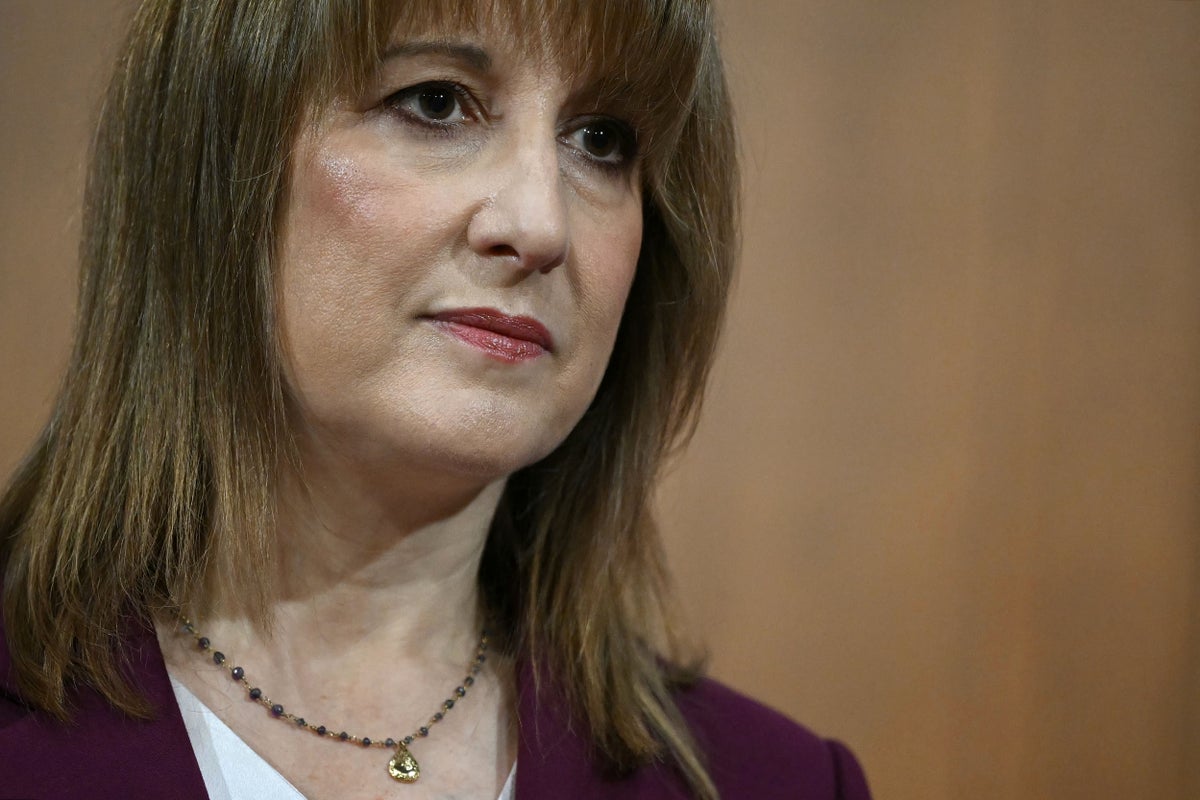Business
Tata Motors Demerger Complete: Selling Shares now? Tax Expert Warns Of CV-Gain, PV-Loss Twist

Last Updated:
Tata Motors completed its demerger, listing Tata Motors Ltd for commercial vehicles. Shareholders get tax-neutral shares, with gains taxed only on sale.

Tata Motors Demerger
Tata Motors Demerger: Tata Motors Limited, the commercial arm of the automobile, has begun trading on November 12. Shares of Tata Motors Commercial Vehicles Ltd (TMCVL) made their stock market debut at Rs 335 apiece on NSE, a premium of 28.48% to its implied value of Rs 260.75 per share. Shares dropped to end at Rs 317.60 apiece.
The listing follows the Tata Motors demerger, which officially came into effect on October 1, 2025. Under the plan, shareholders received one share of Tata Motors Commercial Vehicles Ltd for every share held in Tata Motors as of the record date, October 14, 2025.
Post-restructuring, the Commercial Vehicles (CV) business has been renamed Tata Motors, while the Passenger Vehicles (PV), Electric Vehicles (EVs), and Jaguar Land Rover (JLR) businesses now operate under Tata Motors Passenger Vehicles Ltd (TMPV), which is already listed as a separate entity.
The good news is that receiving these new shares is not taxable. Since the split took place under a court-approved demerger, Section 47 of the Income Tax Act treats this as “tax neutral”, meaning there is no transfer and no tax is triggered at the time of allotment.
What Happens If You Sell These Shares?
But, investors must know that these shares will be taxable if you sell them.
Sujit Bangar, the founder of taxbuddy.com, has explained the demerger taxation in his X post.
Tata Motors has officially declared the cost allocation ratio for the two new entities:
- 31.15% of your original cost goes to the CV company
- 68.85% goes to the PV company
This split must be followed exactly while calculating capital gains.
For example, an investor who originally bought 1,000 Tata Motors shares at Rs 660 each had a total cost of Rs 6,60,000. After applying the official ratio, the revised cost becomes:
- TMCV: Rs 2,05,590
- TMPV: Rs 4,54,410
If these shares are sold at the current market prices—Rs 318 for Tata Motors and Rs 391 for Tata Motors Passenger Vehicle—the investor ends up with:
- Gain of Rs 1,12,410 on the CV company
- Loss of Rs 63,410 on the PV company
- Net long-term gain: Rs 49,000
Tata Motors has 66,55,766 shareholdersThey’ve completed a demerger and recently declared the cost of both companies
Before you rush to sell, you may have gains in the CV entity but a loss in the PV entity.
Here’s all that you need to know about your demerger taxation 👇🧵 pic.twitter.com/7fkCN8SQUs
— Sujit Bangar (@sujit_bangar) November 14, 2025
The original holding period of Tata Motors carries forward for both companies. This decides whether the gain is short-term or long-term.

Varun Yadav is a Sub Editor at News18 Business Digital. He writes articles on markets, personal finance, technology, and more. He completed his post-graduation diploma in English Journalism from the Indian Inst…Read More
Varun Yadav is a Sub Editor at News18 Business Digital. He writes articles on markets, personal finance, technology, and more. He completed his post-graduation diploma in English Journalism from the Indian Inst… Read More
November 15, 2025, 10:40 IST
Read More
Business
Gold Loan Tips: 3 Repayment Tricks That Can Save You A Fortune

Last Updated:
Three repayment choices, one crucial decision — and the difference could cost you lakhs. Pick wisely, and a gold loan becomes far lighter on both your mind and your pocket
Selecting the right gold loan repayment method can save you money. (AI Generated)
Gold loans may be easy to take, but they are not always easy to repay, and a small mistake can cost borrowers thousands, even lakhs, in extra interest. Most people focus only on the 9-10 per cent interest rate, unaware that the real cost depends entirely on the repayment method they choose.
One wrong decision can make a cheap loan expensive; the right one can make it far more affordable.
According to an Economic Times report, Jijith Raj, Business Head at Indel Money, has explained three loan repayment methods and who each of them is best suited for.
1. Regular EMI
In this method, you pay a fixed instalment every month, which includes both principal and interest. As the months pass, the principal reduces, and the total interest you pay is the lowest among the three options.
This method is ideal for people who earn a regular monthly income like salaried employees, pensioners, or those receiving steady rental income. Setting up an auto-debit ensures discipline.
However, if you miss even a single EMI, the bank may quickly classify your account as an SMA and report it to the credit bureau, which can lower your CIBIL score.
2. Bullet Repayment
This is the option most people prefer because it gives them the highest level of flexibility. You may pay nothing or only the interest during the loan period, and then clear the entire principal and remaining interest in one go on the final day. This method works well if you are certain that you will receive a large sum within 6-12 months, such as from selling property, an FD maturing, or a sizeable business payment.
But the risk is high: if you are unable to arrange the lump sum by the due date, the interest balloons because the full principal remains unpaid.
Moreover, 45 days after the loan period ends, the bank can begin the process of auctioning your gold, which catches many borrowers off-guard.
3. Overdraft Facility
This option may appear slightly more expensive upfront, but it is perfect for those with irregular income like freelancers, small shop owners, agents who work on commission, consultants, and similar professions.
The bank sanctions a limit (for example, Rs 10 lakh), and you pay interest only on the amount you actually withdraw, not on the entire limit. When you receive money, you can deposit it back instantly, and your interest reduces immediately. You can withdraw and deposit as many times as you wish.
If you need a top-up, it is usually granted without closing the existing loan. Although the interest rate might be a bit higher, the overall cost remains low because your outstanding balance typically stays small.
Which Method Saves The Most?
- If your income is steady, choose EMI as it results in the lowest interest outflow.
- If you are expecting a lump sum, bullet repayment can work but it is risky.
- If your income is irregular, opt for the overdraft facility, which keeps your interest under control.
A crucial tip: If you have chosen the wrong repayment scheme earlier and a major portion of your loan tenure still remains, close the old loan and take a new loan against the same gold under a better scheme.
Most companies do not charge foreclosure fees, but always confirm this before proceeding.
November 15, 2025, 11:42 IST
Read More
Business
Trump cuts tariffs on goods like coffee, bananas and beef in bid to slash consumer prices

U.S. President Donald Trump gestures during an announcement from the State Dining Room at the White House in Washington, D.C., U.S., Oct. 23, 2025.
Jonathan Ernst | Reuters
President Donald Trump on Friday exempted key agricultural imports like coffee, cocoa, bananas and certain beef products from his higher tariff rates.
The move comes as Trump faces political blowback for high prices at U.S. grocery stores. Some distributors of beef, coffee, chocolate and other common food items have raised prices as Trump’s tariffs took hold this year, adding to pressure on household budgets created by decades-high inflation in recent years.
Trump’s action Friday also exempts a range of fruits including tomatoes, avocados, coconuts, oranges and pineapples. Along with coffee, the tariff reductions extend to black and green tea, and spices like cinnamon and nutmeg.
The move marks a reversal for Trump, who has insisted tariffs are necessary to protect U.S. businesses and workers. He has contended U.S. consumers will not ultimately pay for the higher duties.
The exemptions come just a day after Trump reached trade framework agreements with four Latin American countries – including 10% tariffs on most goods from Argentina, Guatemala, and El Salvador, and 15% from Ecuador. It also removes duties specifically on products not grown or produced in the U.S. in sufficient quantities, like bananas and coffee.
Rising food prices have hampered U.S. households for several years. Consumer Price Index data show food-at-home prices increased approximately 2.7% year-over-year in September. (More recent data was delayed because of the government shutdown).
The tariff exemptions aim to help moderate these grocery price increases, although experts caution that other factors such as global supply shortages also influence prices, especially for coffee and beef.
Here’s more background on how industries like beef, coffee and cocoa have reacted to tariffs and rising prices.
Beef
A customer shops for meat at a Costco store on Nov. 11, 2025 in Novato, California.
Justin Sullivan | Getty Images
The tariff exemption for beef comes after months of rising prices tied in part to Trump’s own tariff policy.
Over the past year, the U.S. imposed steep duties on major suppliers including Brazil, Australia, New Zealand and Uruguay. Brazil – the world’s second-largest beef producer – has faced effective tariff rates topping 75%, driving down imports into the U.S. just as the cattle herd in the country hit a near 75-year low.
Ranchers have struggled to rebuild herds amid drought, higher feed costs and tariffs on fertilizer, steel and aluminum that have made equipment and repairs more expensive.
The supply squeeze has fueled a spike in prices at the grocery store: uncooked beef products rose 12% to 18% year over year in September, according to the most recent consumer price index report from the Bureau of Labor Statistics.
Producers told CNBC earlier this month that policy whiplash, from changing tariff rates to the recent expansion of Argentina’s beef quota, has further chilled long-term investment, keeping supplies tight and sentiment fragile.
Coffee
Coffee beans are displayed at a grocery store on Nov. 13, 2025 in San Anselmo, California.
Justin Sullivan | Getty Images
Ground roast coffee prices in the U.S. reached $8.41 per pound in July, a record high and a 33% increase from the prior year, according to Bureau of Labor Statistics data.
Trump’s 50% tariff on Brazilian coffee – which supplies roughly a third of U.S. imports – drove up costs across the roasting and retail supply chains. Vietnam, Colombia and other major exporters have also been swept up in the administration’s food tariffs.
Roasters and cafés say they have no way around the duties because the U.S. produces none of the beans it consumes, leaving importers exposed to higher costs regardless of origin. The September CPI report found that coffee prices climbed nearly 21% in August from the prior year. That was the largest jump since the 1990s.
Retailers have warned the impact could have spread if tariffs stayed in place. The Tax Foundation estimated in August that 74% of U.S. food imports faced tariffs, already hitting tea, spices and other products that, like coffee, have no domestic supply chain.
Many of those products that have little or no U.S. production were on the list of items Trump exempted from higher tariffs Friday.
Global coffee prices are hovering near a 50-year high reached in February.
Cocoa
Cocoa has faced similar price pressures.
Even after a sharp selloff this fall, futures are still more than double pre-pandemic levels, costing roughly $5,300 today, following tariffs and three years of weather-driven crop failures in the Ivory Coast and Ghana.
In October, Hershey executives said they expected $160 million to $170 million in tariff expenses this year, on top of record-high bean costs that pushed retail chocolate prices nearly 30% higher from the prior year heading into Halloween, according to research firm Circana.
Business
Chancellor abandons planned income tax hike because of improved forecasts

The Chancellor has abandoned plans to hike income tax at the Budget because of improved economic forecasting.
Rachel Reeves had been expected to hike income tax in the face of a yawning gap in her spending plans, hinting as recently as Monday that the alternative would be “deep cuts” to public investment.
But reporting overnight claimed she has abandoned introducing an income tax rise at the November 26 Budget over fears it could anger both voters and backbench Labour MPs.
The PA news agency understands the strength of tax receipts has improved forecasting from the Office for Budget Responsibility, allowing for the U-turn.
This is particularly the case on stronger wage performance: the higher wages are, the more tax is paid on them.
A downgrade in productivity has also not been as bad as was first feared.
While Ms Reeves is no longer understood to be pursuing an income tax hike, tough choices are still said to lie ahead for the Government and other tax rises have not been ruled out.
Income tax thresholds could still be reduced while tax rates are kept the same, a move which could raise billions of pounds for the Treasury.
Limits to salary sacrifice schemes, as well as new measures to tax electric vehicles, are still in the mix as the Treasury pursues a “smorgasbord” approach of raising a range of smaller taxes.
The Chancellor has not changed her approach, it is understood, and still intends to give herself larger fiscal headroom – the buffer against economic headwinds which could impact Government spending plans.
The latest Budget measures were submitted last week, rather than being a knee-jerk response to the turmoil in No 10 this week sparked by a briefing war.
Ms Reeves has been laying the ground for tax rises over recent weeks, including during an early-morning speech on November 4 aimed at preparing the public for the Budget.
Downing Street insisted that the thrust of the speech “stands”.
The Prime Minister’s official spokesman said: “She was very clear about the challenges the country faces and her priorities in addressing those challenges.
“All of that still stands.”
The spokesman refused to comment on Budget speculation, but said the Chancellor will aim to “build more resilient public finances with the headroom to withstand global turbulence”.
This would “give businesses the confidence to invest and leaving the Government freer to act when the situation calls for it”, he added.
Government borrowing costs rose in the wake of the apparent U-turn on income tax on Friday morning.
Speculation about the change in direction sparked a sell-off in UK Government bonds, also known as gilts: the means by which the Government borrows money from private investors.
The gilt market later stabilised somewhat as the reasoning behind the Treasury’s decision-making became apparent.
Among those who welcomed suggestions the tax rise had been abandoned was Health Secretary Wes Streeting.
He told PA: “What I would say about this morning is, it is really important that we keep the promises that we made to the public at the last general election.
“Our economy was broken by the Conservatives, so were our public services, but so was trust in politics itself.
“Our job is to rebuild the economy, rebuild our public services, and rebuild trust in politics.”
Helen Miller, director of the Institute for Fiscal Studies (IFS) think tank, said it was “not unusual” for chancellors to make last-minute changes to their Budget plans.
She added: “But the news that Rachel Reeves has backed away from a plan to increase the rates of income tax will lead investors to worry that the Chancellor will instead increase a range of smaller taxes that can be more damaging to economic growth.
“They may also worry that the change of plans signals that this Government are reluctant to do politically difficult things.
“These are the kinds of concerns that can lead investors to demand higher returns when lending to the Government.”
If the Government does choose to raise a set of smaller taxes, they should also be reformed “so that they do less damage to growth”, the IFS chief said.
-

 Entertainment7 days ago
Entertainment7 days agoChina unveils£5.4 bn Fujian, its most advanced aircraft carrier yet
-

 Politics1 week ago
Politics1 week agoIDF lawyers warned of possible Gaza war crimes: US intel findings
-

 Entertainment1 week ago
Entertainment1 week agoRobert Pattinson jokes about competing with Gen Z
-

 Tech1 week ago
Tech1 week ago‘Vibe coding’ named word of the year by Collins dictionary
-

 Business1 week ago
Business1 week agoFM asks banks to ensure staff speak local language – The Times of India
-

 Sports1 week ago
Sports1 week agoWho’s the striker beating Mbappé, Haaland in race for European Golden Shoe?
-

 Business1 week ago
Business1 week agoBudget tax hikes could see food prices soar, major supermarket boss warns
-

 Tech1 week ago
Tech1 week agoWhy fears of a trillion-dollar AI bubble are growing





